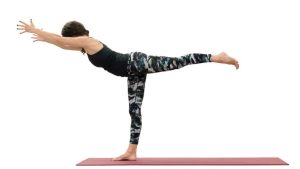
Both Parvatasana and Virabhadrasana come in balancing asanas. By doing these asanas, one gets physical and mental peace, and balance is created.
Balance Asana means establishing balance in your body through asanas. And it comes with all types of body balancers. The balancing postures include Nataraja Asana, Bakasana, Vrischika Asana, Sarvansana, Shirshasan, etc. Parvatasana and Virabhadrasana 3 also come in balancing asanas. By doing all these asanas, one gets peace of mind as well as physical peace. These asanas balance the body, due to which your productivity increases. So let us know what are the benefits of doing asanas in a balanced posture. Here we are telling you the method and benefits of doing Parvatasana and Virabhadrasana 3.
If you want to learn different types of yoga asana then you should enroll in a Retreat for Depression.
Benefits of doing Parvatasana:

Parvatasana is a balancing asana. By doing this asana, we get physical balance. At the same time, this asana strengthens our leg muscles. This asana is also helpful in reducing weight. Along with this, by doing this asana, the blood circulation in our body increases. Due to this unwanted substances in our body come out through sweat. This asana gives a good stretch to our body, which works to make us tired. If you are feeling very lethargic then doing Parvatasana will infuse energy in your body, and you will feel good.
How to do Parvatasana:
- Stand in a careful position.
- Stick both the hands-on your thigh.
- Keeping the waist straight, bend the knee of your right leg.
- Place the toes of the straight leg on top of the thigh of the opposite leg.
- Now while keeping the balance of your body, while breathing in, raise both your hands towards the sky and join the Namaskar Mudra.
- In this, keep your spine straight, pull the stomach inwards, and keep the hands pulled upwards.
- Try to establish the balance of the body with the toes of your opposite foot.
- Hold 30 seconds in this posture.
- If you are not able to hold in this posture, then do this asana with the support of the wall.
Precautions while doing Parvatasana:
- People who have a lot of weight should do this asana carefully. Otherwise, an injury may occur.
- People who have ankle injuries should not do this asana.
- Even if you have arthritis, do not put too much pressure on your knee.
Benefits of Virabhadrasana 3:

By doing Virabhadrasana 3 our confidence increases. By doing this asana, we get balance physically and mentally. Unless your mind is calm, you will not be able to do this asana in balance. By practicing it gradually, your body will be balanced and then the mind will be balanced. By doing Virabhadrasana, your thoughts also get balanced and also relax the muscles of the whole body. Virabhadrasana makes the muscles of our legs and waist extra strong. It is also beneficial for our shoulders and neck.
How to do Virabhadrasana 3:
- Stand in a careful position.
- Take both your hands by sticking to your thighs and straightening the whole body, pressing your toes towards the mat.
- Keeping the balance of your body, lift your straight leg from behind and bring it to 90 degrees.
- While raising both your hands from side to side, stretch out the front from the side of the ears. In this, all your weight will be on your opposite leg.
- In this posture, the position of our body will be like the English letter T.
- Hold this posture for 30 seconds and repeat with the other leg. And come back.
- And you can also do this asana with the support of a wall.
If you are a fitness freak and want to learn more about yoga poses, then you can learn a 500 Hour Yoga Teacher Training in Rishikesh.
Precautions while doing Virabhadrasana 3:
- People who are overweight should do this with caution as they may fall.
- People who have Arthritis should not do this asana.
Both Parvatasana and Virabhadrasana come in balancing asanas. By doing these asanas, one gets physical and mental peace, and balance is created.




